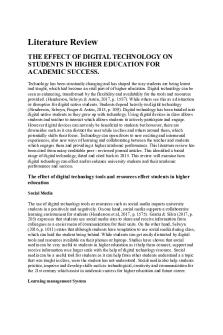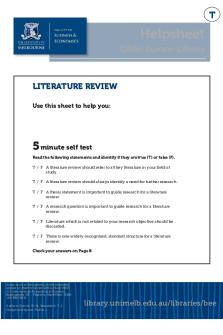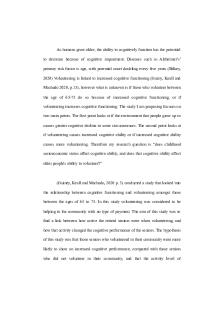Literature Review on Recruitment and Sel PDF

| Title | Literature Review on Recruitment and Sel |
|---|---|
| Course | Advanced Accounting: Not-For-Profit Entities & Advanced Financial Accounting Topics |
| Institution | Loyola University Chicago |
| Pages | 7 |
| File Size | 147.7 KB |
| File Type | |
| Total Downloads | 8 |
| Total Views | 139 |
Summary
adfa sdfas asdfas df ...
Description
Literature Review on Recruitment and Selection Practices of RBL
Submitted to: Dr. Mohammad Thoufiqul Islam Associate Professor Department of Management University of Dhaka
Submitted by: Md. Mahmudul Hassan Munna MBA Serial NO: 207 Department of Management University of Dhaka
Date of submission: 16. 07. 2014
Succession management is the process of ensuring that, a pool of skilled employees is trained and available to the organization to meet the strategic objective of the organization. It is very much important for the organization as organization has unlimited life and it required more and more competent people to meet the need of the fast moving world. Another thing is skilled people are not made in one day. The need to build up and it required time. For this reason, organizations have to practice good succession management based on the future need and groom up employees accordingly. Succession management is a complex process as it deals with the complex human being. A well tested succession management process consists of five steps. Those steps are briefly discussed here for the better understanding.
Align succession management plans with strategy Depending on the market or the types of business the required skill vary from organization to organization. Organizations need people to meet the objective of the organization. So the HR has to align all its strategy with its objective. So the managers has to determine what are the required skills of the manager, how many managers need to fight in the competitive global world, how many employees have those required skills. After determining these things the HR manager has to plan all the things accordingly like succession planning, performance evaluation etc.
Identify the skills and competencies needed to meet strategic objectives Once the HR manager has decided the required succession management objectives than they have to go for the determination of the scale for the performance measurement. There are two types of performance measurement scale. They are as follows: Job-Based approach This approach assume that, the employee who has the significant experience as manager and have acquire job skills such as motivation, delegating, marketing, or managing finance will be a successful manager.
Competency-Based approach It refers to the group of related behavior that is needed for successful performance. They are measurable performance that differentiates successful manager from the others. These competencies may be hard or soft. Hard competencies are the ability to build a new technology and the soft competencies is the ability to be in the top ten. Manager acquires these competencies through job rotation and with the spirit of learning new things. Among the above two competency measurement scale, most of the manager and HR specialist prefer the second one. It is so because, the global business world is dramatically changing every day and a successful manager have to know all the things related to the business of the organization.
Discussions about Recruitment Recruitment refers to the process of attracting, screening, and selecting a qualified person for a job. At the strategic level it may involve the development of an employer brand which includes an 'employee offering'. So by the definition The process of identifying and hiring the best-qualified candidate (from within or outside of an organization) for a job vacancy, in a most timely and cost effective manner. The recruitment phase of the hiring process takes place when the company tries to reach a pool of candidates through job postings on company and external websites, job referrals, help wanted advertisements, college campus recruitment, social media recruiting, etc. Job applicants who respond to the recruitment efforts of the company are then screened to determine if they are qualified for the job. Selected candidates are invited to interviews and other methods of assessment. Employers may check the background of prospective employees, as well as check references prior to making a job offer and hiring the top candidate for the position The stages of the recruitment process include: job analysis and developing a person specification; the sourcing of candidates by networking, advertising, or other search methods; matching candidates to job requirements and screening individuals using testing (skills or personality assessment); assessment of candidates' motivations and their fit with organizational requirements by interviewing and other assessment techniques. The recruitment process also
includes the making and finalizing of job offers and the induction and on boarding of new employees. Depending on the size and culture of the organization recruitment may be undertaken in-house by managers, human resource generalists and / or recruitment specialists. Alternatively parts of all of the process might be undertaken by either public sector employment agencies, or commercial recruitment agencies, or specialist search consultancies.
There are two types of recruitment
Internal recruitment
External recruitment
The advantages of internal recruitment are that 1. Considerable savings can be made. Individuals with inside knowledge of how a business operates will need shorter periods of training and time for 'fitting in'. 2. The organization is unlikely to be greatly 'disrupted' by someone who is used to working with others in the organization. 3. Internal promotion acts as an incentive to all staff to work harder within the organization. 4. From the firm's point of view, the strengths and weaknesses of an insider will have been assessed. There is always a risk attached to employing an outsider who may only be a success 'on paper'.
External recruitment External recruitment makes it possible to draw upon a wider range of talent, and provides the opportunity to bring new experience and ideas in to the business. Disadvantages are that it is more costly and the company may end up with someone who proves to be less effective in practice than they did on paper and in the interview situation.
Recruitment approaches mbination of two or more of these as part of a recruitment exercise or to deliver their overall recruitment strategy. In summary five basic models more commonly found are:
An in-house personnel or human resources function may in some case still conduct all stages of the recruitment process. In the smallest organizations recruitment may be left to individual managers. More frequently whilst managing the overall recruitment exercise and the decision-making at the final stages of the selection process external service providers may undertake the more specialized aspects of the recruitment process.
Outsourcing of recruitment to an external provider may be the solution for some small businesses and at the other extreme very large organizations.
Employment agencies are established as both publicly-funded services and as commercial private sector operations. Services may support permanent, temporary, or casual worker recruitment. They may be generic agencies that deal with providing unskilled workers through to highly-skilled managerial or technical staff or so-called niche agencies that specialize in a particular industrial sector or professional group.
Executive search firms for executive and professional positions. These firms operate across a range of models such as contingency or retained approaches and also hybrid models where advertising is also used to ensure a flow of candidates alongside relying on networking as their main source of candidates.
Internet recruitment services including recruitment websites and job search engines used to gather as many candidates as possible by advertising a position over a wide geographic area. In addition social network sourced recruitment has emerged as a major method of sourcing candidates
Sources of internal recruitment
Company’s own website.
Placement consultants.
Employee reference
From internship student
Employment of Relatives
Sources of external recruitment
Advertisement in the newspapers.
Campus Recruitment.
Job Centre
Notice Bord
Discussion about selection Employee Selection is the process of putting right men on right job. It is a procedure of matching organizational requirements with the skills and qualifications of people. Effective selection can be done only when there is effective matching. By selecting best candidate for the required job, the organization will get quality performance of employees. Moreover, organization will face less of absenteeism and employee turnover problems. By selecting right candidate for the required job, organization will also save time and money. Proper screening of candidates takes place during selection procedure. All the potential candidates who apply for the given job are tested. But selection must be differentiated from recruitment, though these are two phases of employment process. Recruitment is considered to be a positive process as it motivates more of candidates to apply for the job. It creates a pool of applicants. It is just sourcing of data. While selection is a negative process as the inappropriate candidates are rejected here. Recruitment precedes selection in staffing process. Selection involves choosing the best candidate with best abilities, skills and knowledge for the required job. Selection in staffing is the part of the recruiting process that deals with choosing an employee to hire from among a narrowed-down list of outstanding candidates. Selection can actually occur several times throughout the recruiting process. Managers select which candidates to contact
based on their resumes, which candidates to bring in for an interview and finally which applicants to hire for open positions. Understanding the different levels of selection and what to look for at each level can help you to select the ideal job candidates for long-term success. After interviews are conducted, hiring managers and human resources personnel meet and select a candidate to offer the job to. The team carefully considers the candidates' qualifications, assessments and interviews to determine whom to offer the job. If hiring managers are not satisfied with any of the candidates, the recruiting process may start again. In most cases, the hiring team has the ability to select a candidate and a job offer is made. If the candidate declines the job offer, the recruiting process may start again.
Methods of selection
The interview as a selection method: pros and cons
Tests as a selection tool
The selection interview
Selection in staffing is the part of the recruiting process that deals with choosing an employee to hire from among a narrowed-down list of outstanding candidates. Selection can actually occur several times throughout the recruiting process. Managers select which candidates to contact based on their resumes, which candidates to bring in for an interview and finally which applicants to hire for open positions. Understanding the different levels of selection and what to look for at each level can help you to select the ideal job candidates for long-term success. After interviews are conducted, hiring managers and human resources personnel meet and select a candidate to offer the job to. The team carefully considers the candidates' qualifications, assessments and interviews to determine whom to offer the job. If hiring managers are not satisfied with any of the candidates, the recruiting process may start again. In most cases, the hiring team has the ability to select a candidate and a job offer is made. If the candidate declines the job offer, the recruiting process may start again....
Similar Free PDFs

Literature review on IFRS
- 11 Pages

Literature Review
- 10 Pages

Literature Review
- 9 Pages

Literature Review
- 6 Pages

Literature Review
- 32 Pages

Literature Review
- 9 Pages

Literature Review
- 5 Pages

Literature Review
- 15 Pages
Popular Institutions
- Tinajero National High School - Annex
- Politeknik Caltex Riau
- Yokohama City University
- SGT University
- University of Al-Qadisiyah
- Divine Word College of Vigan
- Techniek College Rotterdam
- Universidade de Santiago
- Universiti Teknologi MARA Cawangan Johor Kampus Pasir Gudang
- Poltekkes Kemenkes Yogyakarta
- Baguio City National High School
- Colegio san marcos
- preparatoria uno
- Centro de Bachillerato Tecnológico Industrial y de Servicios No. 107
- Dalian Maritime University
- Quang Trung Secondary School
- Colegio Tecnológico en Informática
- Corporación Regional de Educación Superior
- Grupo CEDVA
- Dar Al Uloom University
- Centro de Estudios Preuniversitarios de la Universidad Nacional de Ingeniería
- 上智大学
- Aakash International School, Nuna Majara
- San Felipe Neri Catholic School
- Kang Chiao International School - New Taipei City
- Misamis Occidental National High School
- Institución Educativa Escuela Normal Juan Ladrilleros
- Kolehiyo ng Pantukan
- Batanes State College
- Instituto Continental
- Sekolah Menengah Kejuruan Kesehatan Kaltara (Tarakan)
- Colegio de La Inmaculada Concepcion - Cebu







